Trip to Holux - about GPS and more
For a thousand of years sailors had used sun and starts disposition for navigation. Ground travelers found direction signs enough. The sextant replacing the astrolabe becomes the main navi tool since the 18th century. The sextant allows determining the latitude and the longitude of the place you are in by the disposition of several heavenly bodies. The height in degrees and exact time are noted, and then coordinates are calculated analytically or what is more frequent graphically. You might remember that captain Nemo, the captain of the Nautilus submarine and the hero of Jules Vern's work, used the device for navigation. And the submarine had to float to the surface due to that. The least possible error forms about 180 m (200 yards), and closer results may be achieved only with the best scientific sextants under the condition of good visibility.
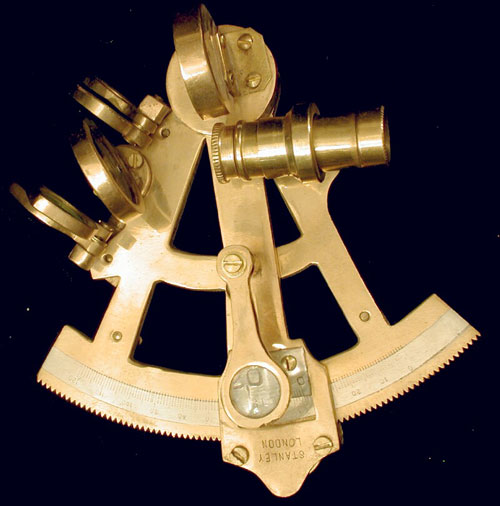
The next step was to create ground based electronic navi systems in the XX century. They were widely spread during World War the II. This method allows definition of the coordinates basing on time delays of the signals transmitted from transmitting stations. Typical measurement error corresponds with sky navigation parameters - that is about 2 miles, but the system was weather-independent. The most famous ground location stations are LORAN and Omega.
Approximately in the mid sixties military departments got clear the existent navi systems did not provide with desired precision. And naturally, eyes were turned to the near space. Transit was the first satellite navi system. This child of the Defence Department USA consisted of 6 satellites. The coordinate definition used the Doppler Effect. The satellites rotated along a known trajectory and broadcasted on a known frequency. And a signal of some other frequency reached the receiver (that is the core of the effect). The location was calculated by the frequency displacement. Satellites allowed locating any point of the terrestrial globe every hour and a half to an accuracy of 200 m. The Transit satellite system existed till 1996.
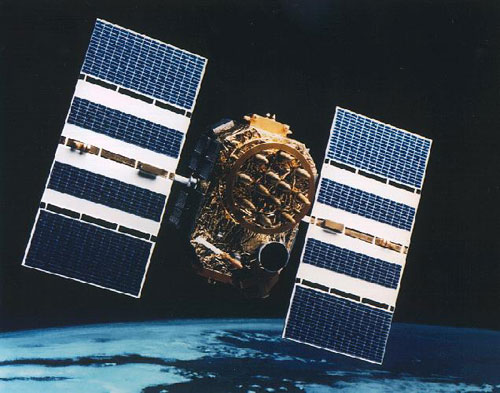
The birthday of a Navstar Global Positioning System (GPS in short) fell on 1973, when the USA Defence Department initiated the unification of the navi system (various departments developed different systems, often incompatible).
The new system differs from the Transmit cardinally. Every satellite carries several atomic clocks and transmits its position and exact time with the signal. A user navi system compares the time extracted from the signal and locates in three points. At the same time no high accuracy clock are necessary in the receiver, only its precision in short time periods in needed.
The whole system consists of three components. The first one is at least 24 satellites (30 for May 2005), each satellite bends the Earth twice for 24 hours at the distance of 20 thousand km above see level. The last generation satellites (the Block IIr series and higher, for today there are 12 of them launched) are joint into a network and can renew the motion parameters with no earth control. The second is ground control centers, necessary to watch the orbits, synchronize time between the satellites and coordinate them. The data broadcasted by satellites may be changed from the earth. And third is GPS receivers.
Despite supporting the system (including the renewal of the satellite park) comes to about half billion USD annually, ordinary users do not have to pay for the satellite signal. Only a GPS receiver and open space are necessary. Though, we will prejudice the last point in the article.
Till 2000 a general access and military GPS signals were separated, and it was called Selective Availability. Ordinary users got an artificially inexact signal that gave a total error of up to 100 m. On the first of May 2000 the president of USA, Bill Clinton, cancelled selective access. The location precision now forms about 20 meters (or less using some contrivances).
We have observed an explosive growth of GPS devices' popularity among end users. Navigation along the city, in the country (when hiking, for instance), car navigation, tracing transportations. Soon GPS receivers will be widely integrated everywhere, phones, PDAs and even personal video players, let alone board computers in cars. And now I hope that after this long introduction everybody got a general clue of what PGS is and what it is used for. The rest of the article will tell about the last generation of GPS devices by Holux.



A bit longer than an hour of speed minibus drive from Taipei, the Taiwanese capital, and we find ourselves in a local Silicic Valley. Though, distinguishing any special area where all the Taiwanese companies place their manufacture is wrong, they are places all over the island. Green plants and a train of factories is a landscape that meets us. The first floor of an office-looking building is the very Holux. The left wing is an assembly department, and the right shelters R&D center. Components are produced in China (Taiwanese companies massively try to bring all the manufacture powers out to the continental part of China), and here precise adjustment, assembly and packing are done.
Several words about the very company. Built in 1994 this company is now the second manufacturer of consumer GPS devices in the world, it gives way only to Garmin. The company provides pocket GPS receivers, GPS mice, Bluetooth GPS receivers, GPS modules, car navigators. It is rather small, and the Taiwanese office counts 75 employees.
The company products are known under such brands as Acer, Asus, palmOne, HP, Dopod. MiTAC uses Holux solutions in navi handhelds. And the company's own brand (Guidetek) has been launched not so long. It is targeted on end users. However devices will be shipped to Russia under the brand of Holux.
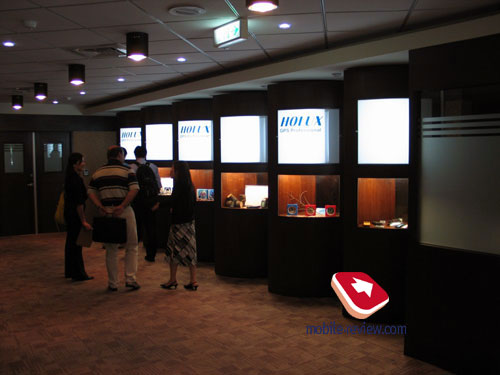
On entering the building we almost immediately get into a demonstrational hall with production samples displayed.



GPS modules and devices by Holux that use them.
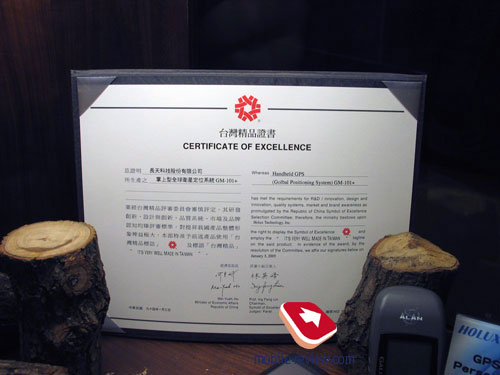

It's not so easy to win a government award for quality and innovations.




One more winner and other device.

And here is a car holder with an integrated GPS receiver. Well, now we can pass to the story about the new products.
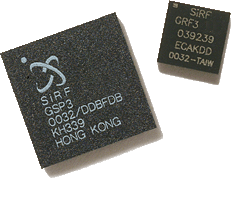
The heart of any GPS receiver is a GPS chip. In its importance it may be compared to a CPU in a handheld or a GSM (UMTS) chip in a phone. The company of SiRF distinguishes on the market. Manu manufacturers and Holux among them use its production. An important milestone was the appearance of the third generation chips SiRFstarIII. That is a new leap in the development of personal satellite navigation. Let's compare the SiRFstarIII and a 2G chip in a table.
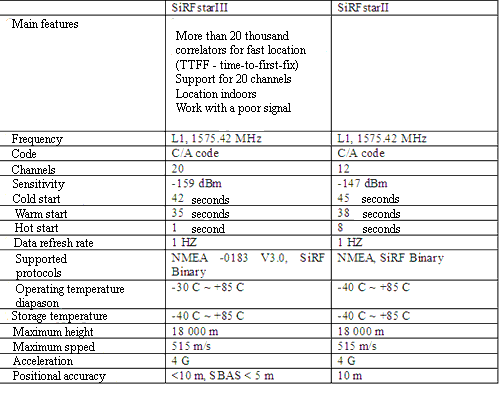
What are the main differences of the third version? And why is it so important to speak about? Let's consider an example of a new Bluetooth GPS receiver GPSlim236. Like all the new Holux products it is based on SiRFstarIII. The receiver may be connected both via Bluetooth and as a usual GPS mouse. The minimal announced battery life forms 10 hours.
Let's have a look at the following image, the receiver is on the table indoors. About 4 meters far from the window, the ground floor. Connected to a smartphone via Bluetooth.
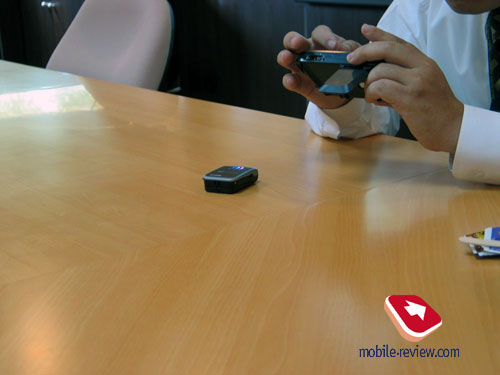
At the same time, the smartphone is perfectly positioned, showing coordinates, time and height above see level. Signal sensitivity and reception indoors are the main advantage of 3G GPS chips.
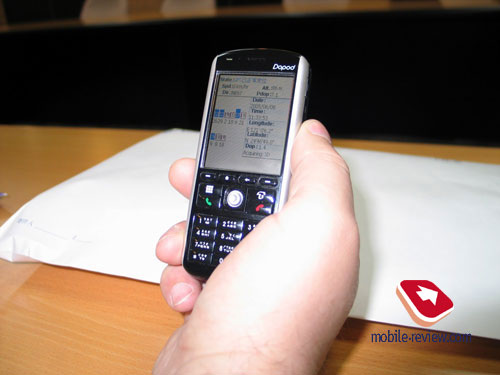
The next product is a GPS navigator NAV-51. It is equipped with a 3.5" screen, operating system is Windows CE .NET. Using an internal antenna is one of the side dignities of the SiRFstarIII. However, with the growth of chip sensitivity, the influence of the noises generated by other PDA components (processor, LCD matrix) grows also. This noise is hard to deal with. That is why the majority of the announced GPS PDAs with SiRFstarIII are mainly equipped with an external antenna. The company managed the problem in the NAV-51, and that makes pride.


A very comfortable holder is realizable due to earlier foreseen grooves for it, the construction is elegant. The approximate retail price of the model forms 330 USD.

And the last device for today is the GR-500 with very interesting functions. Here is an integrated GSM 900/1800 MHz cellular module (optional 1900 MHz), GPRS class 10. The dimensions are 88.5x45x22 mm, the weight is less than 80 g. That is not larger than a usual phone.



With its help you can accept a call, dial one of the three numbers saved in advance, and send a SOS signal (a preset message text is sent to the three programmed numbers).

And the possibilities of the device only start with it. You may program it yourself. You can watch some object moving (data will be transmitted via GPRS with a preset interval, and naturally, the WEB-source must be created by you). You can have the device sending SMS at some certain time or with certain frequency, SMS when crossing the borders of some prescribed area, SMS when speed is exceeded, SMS by an external trigger (a signaling turned on, for instance). And naturally, each message contains coordinates. The device can record the way an object is moved, and then this may be sent to a PC. Here are some of the applications.
- Watching a Taxi
- Antithief systems
- Cars to rent. You can call the holder if he exceeded speed
- Tracing transportation/courier service. Customers may trace the delivery status of the good themselves.
- Watching a baby
As we see, the model may be widely used, the way you apply the device is limited mainly with your imagination. The model has two disadvantages. The first one is its price forming 270-280 USD in retail, and the second is the lack of Bluetooth.
Anton Kotov
(anton.kotov@mobile-review.com)
Translated by Maria Mitina (maria.mitina@mobile-review.com)
Published - 23 June 2005
Have something to add?! Write us... eldar@mobile-review.com
|


























